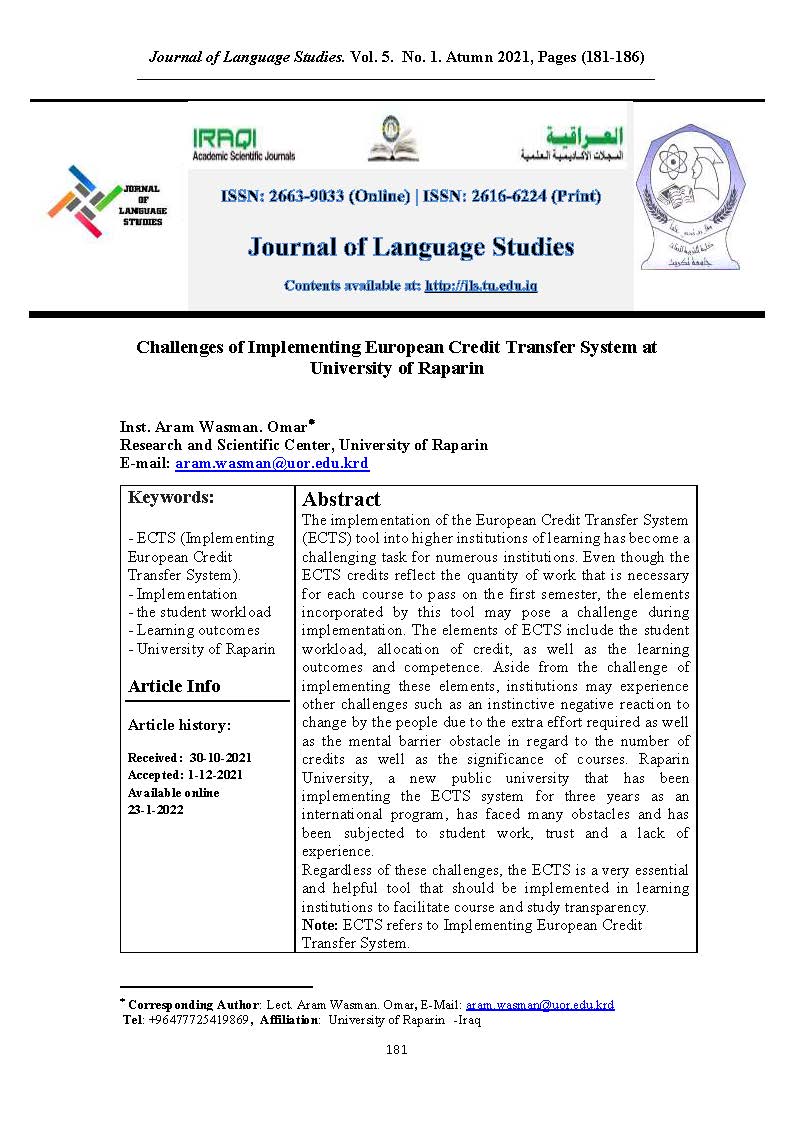Challenges of Implementing European Credit Transfer System at University of Raparin
Aram Wasman. Omar
Research and Scientific Center, University of Raparin
DOI: https://doi.org/10.25130/jls.5.1.13
Keywords: ECTS (Implementing European Credit Transfer System), Implementation, the student workload, Learning outcomes, University of Raparin
Abstract
The implementation of the European Credit Transfer System (ECTS) tool into higher institutions of learning has become a challenging task for numerous institutions. Even though the ECTS credits reflect the quantity of work that is necessary for each course to pass on the first semester, the elements incorporated by this tool may pose a challenge during implementation. The elements of ECTS include the student workload, allocation of credit, as well as the learning outcomes and competence. Aside from the challenge of implementing these elements, institutions may experience other challenges such as an instinctive negative reaction to change by the people due to the extra effort required as well as the mental barrier obstacle in regard to the number of credits as well as the significance of courses. Raparin University, a new public university that has been implementing the ECTS system for three years as an international program, has faced many obstacles and has been subjected to student work, trust and a lack of experience. Regardless of these challenges, the ECTS is a very essential and helpful tool that should be implemented in learning institutions to facilitate course and study transparency. Note: ECTS refers to Implementing European Credit Transfer System.

